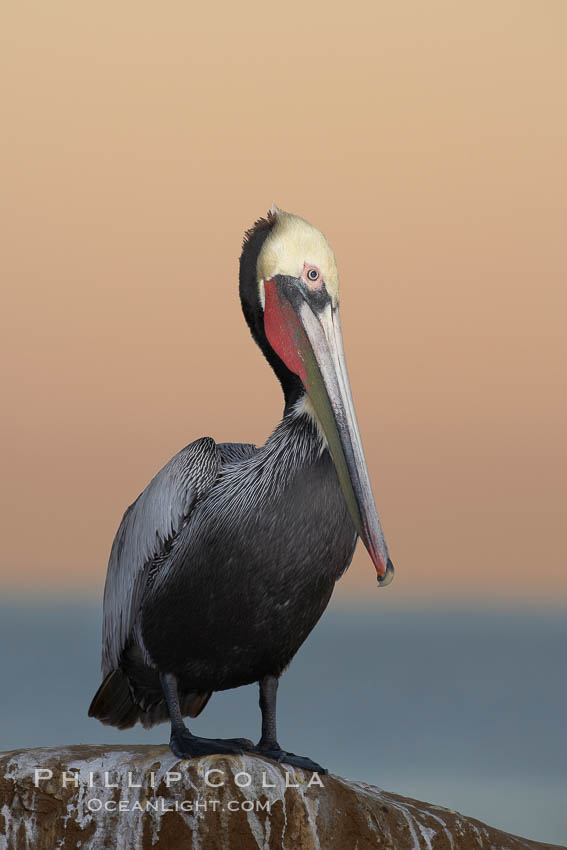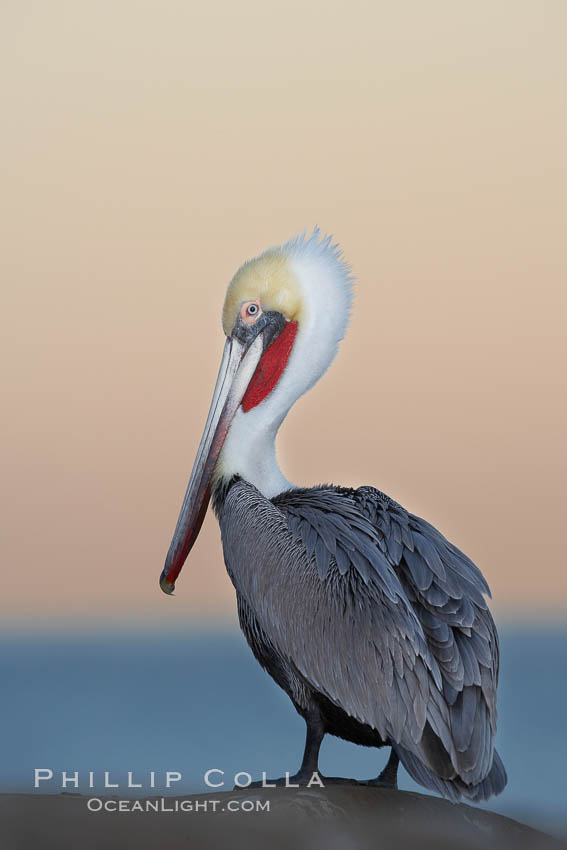See our Guide to Photographing Pelicans in La Jolla.
I met photographer John Pelafigue this morning, a great guy from Humbolt whose website has some really fine images. I also bumped into Garry McCarthy whom I had not seen since bumping into him in La Jolla shooting birds a year ago. Like myself, Garry is an underwater photographer who has also taken up the curious habit of shooting photos on land. Its sad, really, when one gives up real photography for the less savory and more mundane terrestrial pursuit(cue: laugh). As far as my photography went, I had too much lens and my flight shots were pretty weak. I did get a couple pre-sunrise shots of of brown pelicans (Pelecanus occidentalis) about 7am, some 30 minutes before the sun tops Mt. Soledad and lights the birds:
Brown pelican, winter adult breeding plumage, showing bright red gular pouch and dark brown hindneck plumage of breeding adults. This large seabird has a wingspan over 7 feet wide. The California race of the brown pelican holds endangered species status, due largely to predation in the early 1900s and to decades of poor reproduction caused by DDT poisoning.
Image ID: 20074
Species: Brown Pelican, Pelecanus occidentalis, Pelecanus occidentalis californicus
Location: La Jolla, California, USA
Brown pelican, non-breeding winter plumage. This large seabird has a wingspan over 7 feet wide. The California race of the brown pelican holds endangered species status, due largely to predation in the early 1900s and to decades of poor reproduction caused by DDT poisoning.
Image ID: 20078
Species: Brown Pelican, Pelecanus occidentalis, Pelecanus occidentalis californicus
Location: La Jolla, California, USA





